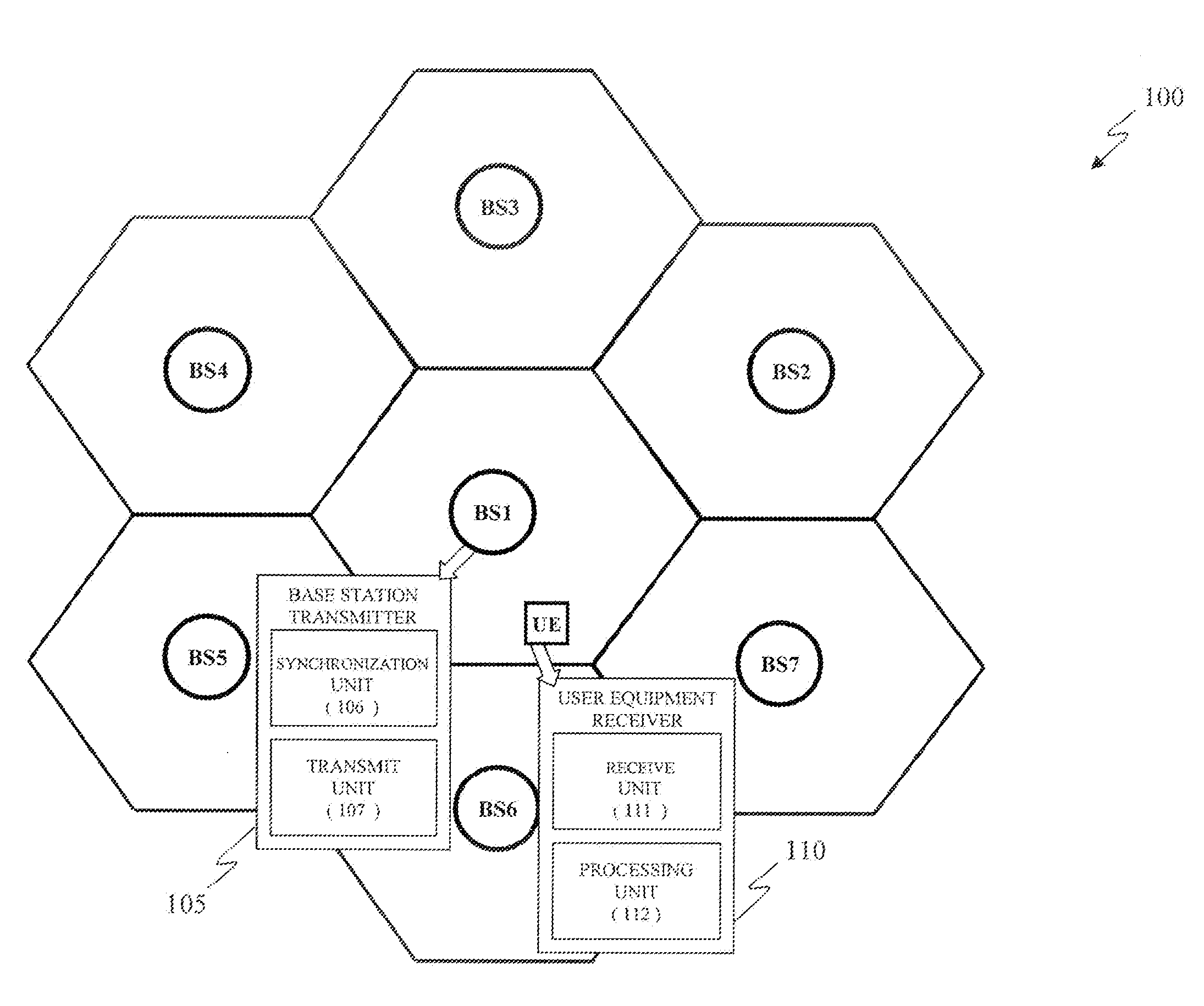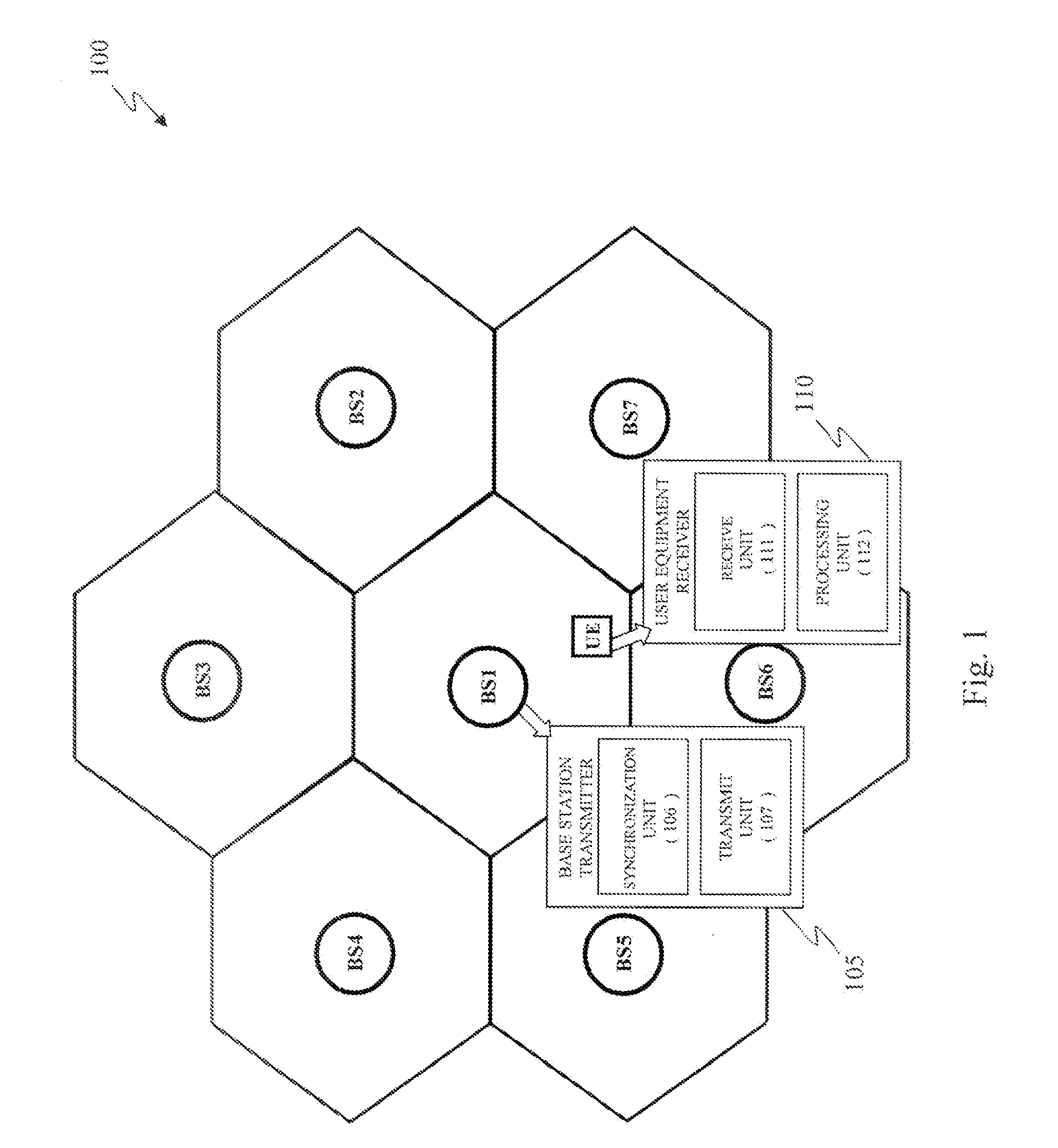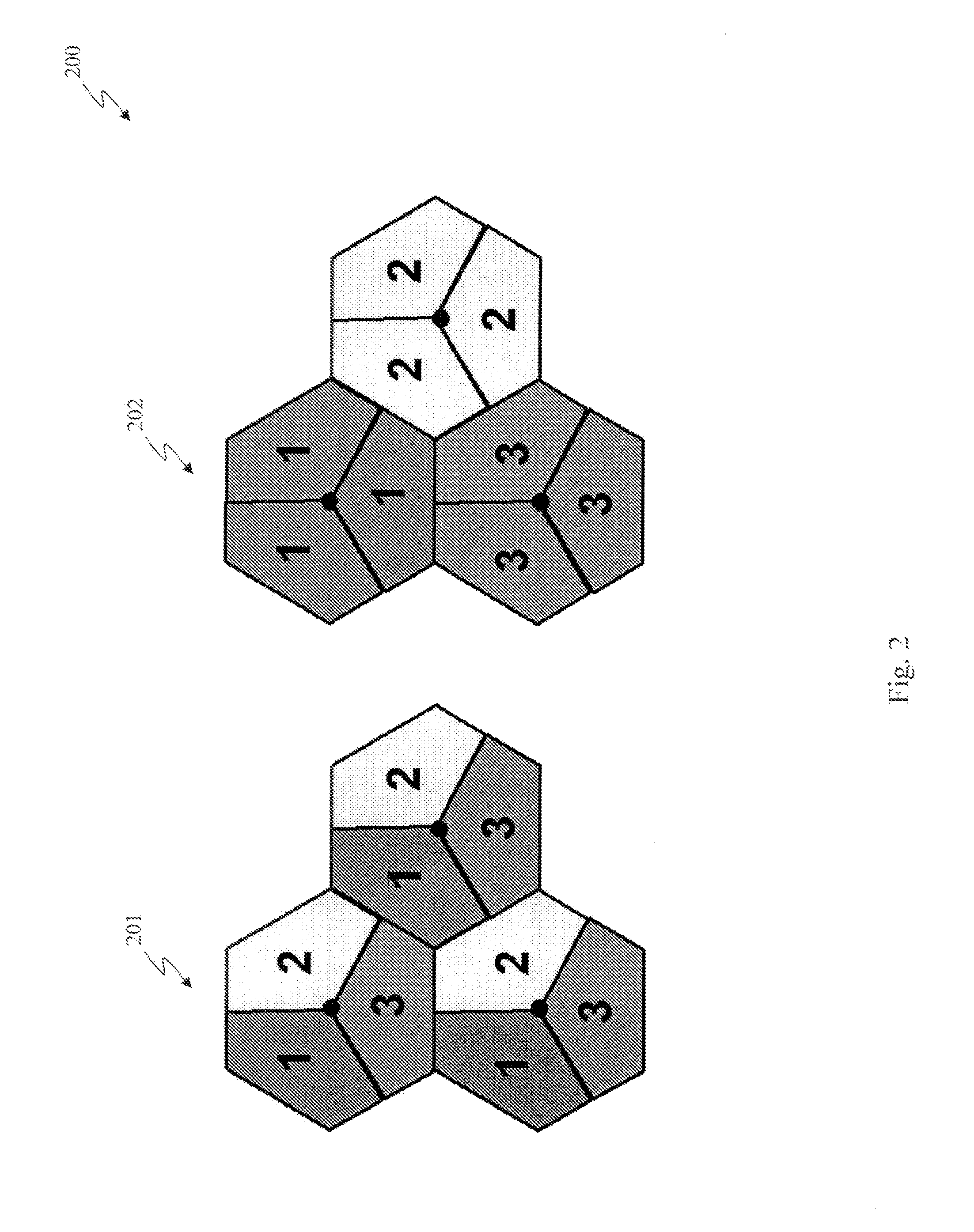Downlink Synchronization Channel And Methods For Cellular Systems
a cellular system and channel technology, applied in the field of wireless communication, can solve the problems of large frequency offset, large search time and additional algorithms, and inability to match the channel experienced by cell-specific transmissions with the transmitted primary signal of user equipment, and achieve the effect of reducing the amount of cell id information
- Summary
- Abstract
- Description
- Claims
- Application Information
AI Technical Summary
Benefits of technology
Problems solved by technology
Method used
Image
Examples
second embodiment
[0036]In either embodiment, primary synchronization sequence planning can be used to improve performance in synchronous networks. Such planning is instrumental since N should be small to minimize the terminal complexity increase as well as the potential degradation in timing estimation accuracy. The allocation of N primary synchronization sequences across cells may differ depending on how the physical Cell ID is partitioned between the primary and secondary synchronization signals. For the second embodiment, however, random allocation of the N primary sequences is not excluded.
embodiment 201
[0037]An exemplary planning / assignment of N primary synchronization sequences for 3-sector hexagonal site is depicted in embodiment 201 of FIG. 2 with N=3. Here, each cell within the same site is assigned 1 out of the 3 available sequences in a 3-sector site. The pattern is then repeated across sites. This embodiment is particularly relevant when the primary synchronization signal carries a partial cell ID information with L=3 (3 Cell IDs within each Cell ID group). In particular, there is a 1-to-1 correspondence between the 3 Cell IDs within the Cell ID group conveyed in the secondary synchronization signal. While this embodiment reduces the load of secondary synchronization signal in carrying the Cell ID information, channel mismatch occurs on the sector boundaries within the same site. This is because the cell ID group information carried by the secondary synchronization signal is site-specific whereas the primary synchronization signal is cell-specific. Note, however, that the m...
embodiment 202
[0038]Another exemplary planning / assignment of N primary synchronization sequences for 3-sector hexagonal site is depicted in embodiment 202 of FIG. 2 with N=3. This embodiment describes the use of site-specific primary synchronization sequence where the same sequence is used for different sectors within the same site. This is especially relevant when the primary synchronization signal is not intended to carry any Cell ID information and the secondary synchronization signal is site-specific (i.e. the Cell ID groups is site-specific) and the remaining Cell ID hypotheses shall be resolved via the cell-specific downlink reference signal or pilot. In this case, the multi-path channel seen by the primary and secondary synchronization signals are identical. The description in 202 of FIG. 2 shows only 3 cellular sites. This allocation pattern is repeated throughout the network as typical networks consist of a multitude of cellular sites.
[0039]An exemplary extension of the previous embodime...
PUM
 Login to View More
Login to View More Abstract
Description
Claims
Application Information
 Login to View More
Login to View More - R&D
- Intellectual Property
- Life Sciences
- Materials
- Tech Scout
- Unparalleled Data Quality
- Higher Quality Content
- 60% Fewer Hallucinations
Browse by: Latest US Patents, China's latest patents, Technical Efficacy Thesaurus, Application Domain, Technology Topic, Popular Technical Reports.
© 2025 PatSnap. All rights reserved.Legal|Privacy policy|Modern Slavery Act Transparency Statement|Sitemap|About US| Contact US: help@patsnap.com



